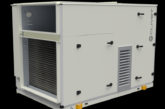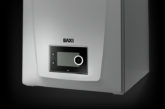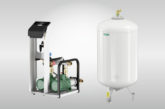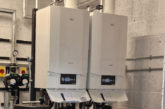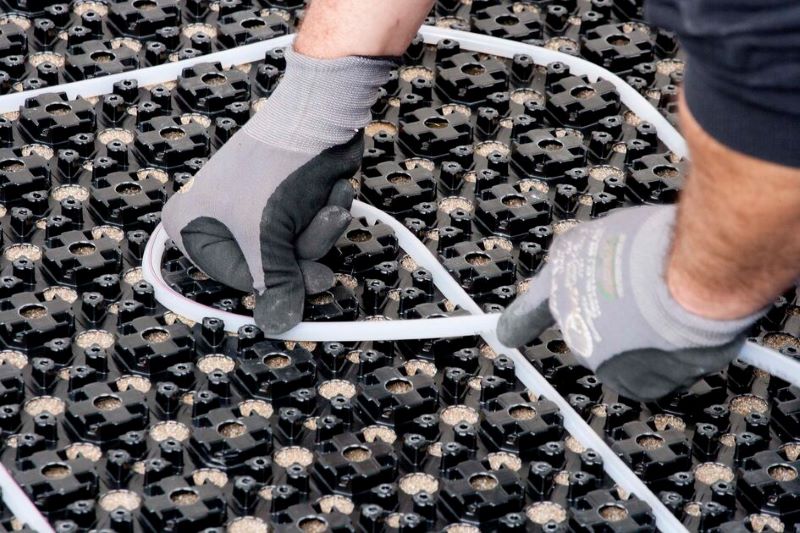
The advantages of radiant heating and cooling systems, such as underfloor heating (UFH), have long been understood for domestic properties, but these systems can also be used effectively for commercial buildings. James Griffiths, Senior Marketing Manager (North West Europe) at Uponor, looks at the role of UFH in the future of commercial heating and what needs to be considered when designing and installing a system.
Sustainability and energy efficiency are now central considerations in our industry. Decarbonising the heating and powering of buildings, currently one of the largest sources of carbon emissions, is essential if the UK is to meet its target of net zero by 2050, with a 78% cut in greenhouse gas emissions by 2035 compared to 1990 levels along the way.
Heating and plumbing professionals will now be well aware of the new versions of Approved Document L of the Building Regulations in England and the updated Building Standards in Scotland that came into effect in June and December 2022 respectively. The aim of the updates to both was to introduce tightened standards for operational carbon emissions.
In addition to these more stringent standards, many businesses, as well as public sector organisations such as schools and care facilities, are feeling the effects of high energy prices. As a result, energy efficiency is now of critical importance for a wide range of buildings.
The role of underfloor heating
Firstly, it is worth noting that there are many types of radiant heating and cooling systems, including two distinct types of UFH – electric and hydronic (water-based) – and it is only the latter that is suitable for commercial premises. This is because electric UFH, while lower cost and simpler to install, is inefficient and therefore impractical for large areas.
When compared with traditional radiators, the far larger surface area of hydronic UFH systems means a lower flow temperature is more easily achievable, allowing simpler compliance with the updated standards. This also means that UFH is highly compatible with renewable and low carbon heat sources, such as solar thermal and heat pumps as well as gas boilers. UFH is also suitable for use with heat networks, also known as district heating, which is often used to provide heat and hot water to multiple buildings on the same site – such as a hospital or university campus – using a single heat source.
Importantly, UFH is highly scalable and can offer a more effective solution for large spaces. As the heat radiates from the whole floor, it eliminates the uneven heating that can occur in open plan areas if radiators are used.
Planning and installing UFH
There are several key factors that must be considered when recommending or installing an underfloor heating system in any building:
Insulation
Among the first areas to consider is the insulation of the building. As with any system designed to meet the new lower flow temperatures, the effectiveness of the UFH will be compromised if the building is poorly insulated. The resulting heat losses often mean the required room temperatures are not achieved, impacting occupant comfort. This is most commonly an issue for older buildings that were not constructed to meet current insulation standards.
To prevent heat losses, the insulation of the walls and roof should be upgraded wherever possible. However, there should be a particular focus on ensuring the floor is sufficiently insulated. Effective insulation fitted beneath the UFH will prevent heat losses into the subfloor and ensure the heat is directed up into the room.
Thermal mass
The thermal mass of the floor – its ability to absorb, store and release heat – is another important factor in ensuring the effectiveness of the system. A good thermal mass improves efficiency as it helps minimise the amount of energy required to maintain the target room temperature. In an underfloor heating system, the thermal mass is generally provided by the screed. An example of an effective floor construction that combines insulation with thermal mass is 65mm of screed laid over 65mm of insulation, ideally on a concrete subfloor.
Flooring materials
A further factor to consider is the type of flooring that will be used. Linoleum and vinyl flooring are suitable for use with UFH as the minimal material thickness means the heat can transfer effectively into the room. Carpet, which is a popular choice for large spaces due to its sound absorbing properties, can pose an issue if the carpet and the underlay provide too much insulation. The recommendation is that the combined insulating properties of the carpet and underlay is no more than 1.5 Tog. However, it can be difficult to find and calculate this. Therefore, professionals should recommend that customers only select products that are categorised as ‘suitable for underfloor heating’.
Choosing the system
While all hydronic UFH systems operate in the same way, not all products offer the same levels of performance. For example, some high-quality systems will heat up quicker than the alternatives on the market. Also, the floor height build-up will differ from system to system. For example, the Uponor Minitec system increases the floor height by just 15mm but still offers significant thermal mass as a screed-based product. Therefore, it is important to look carefully at the product information to compare different options.
The level of support provided by the manufacturer should also be a consideration. The right technical support can help streamline the design and installation of the UFH system and help ensure any potential issues are avoided.
For certain projects, other types of radiant heating systems, such as those that can be integrated into ceilings and walls, may be more suitable. For example, if the floor construction makes retrofitting UFH more challenging. These operate in a similar way to UFH and provide many of the same benefits.
Underfloor heating offers an excellent alternative to conventional radiators in commercial premises due to the greater efficiency that can be achieved, especially at lower flow temperatures. However, as with any heating system there are a range of considerations to ensure the most effective installation.



